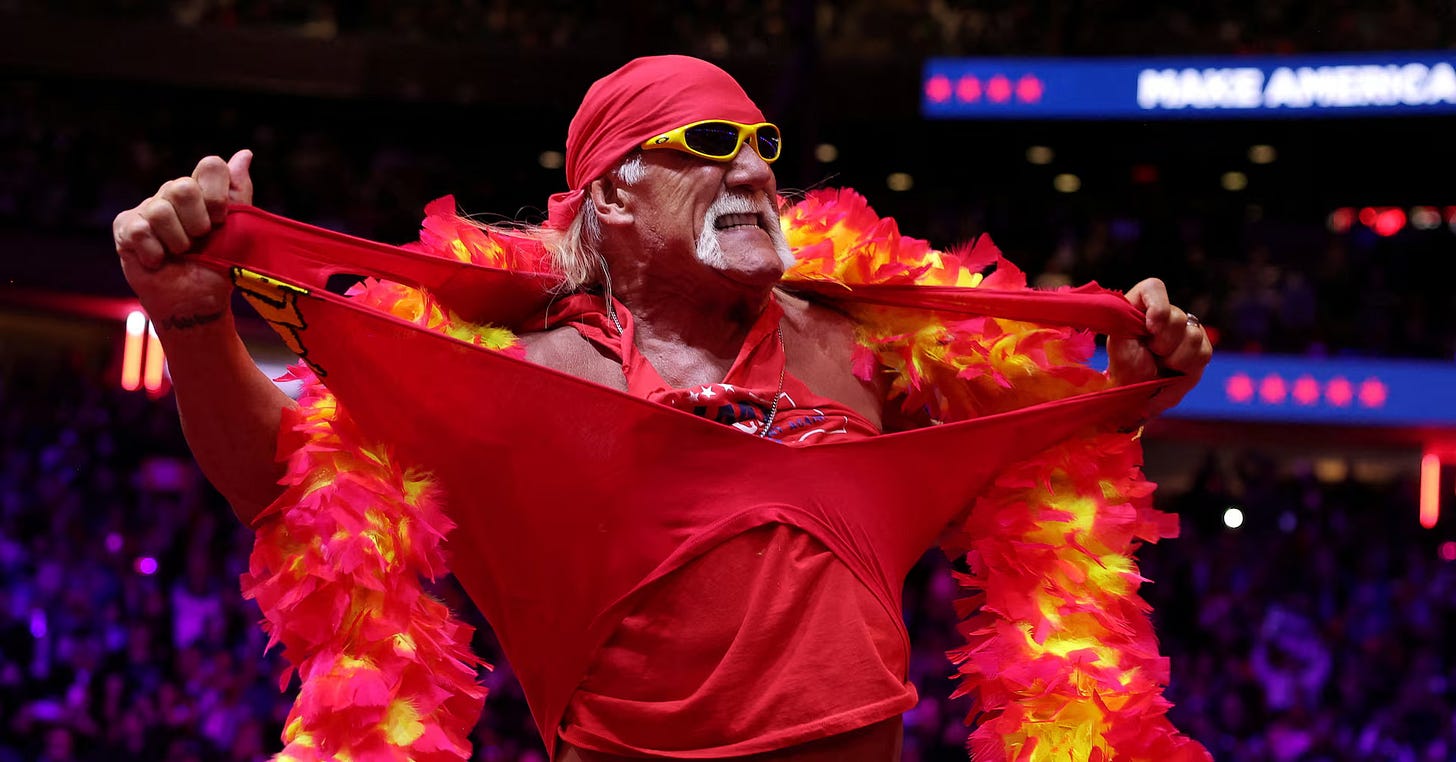How one can admire the entertainer in Hulk Hogan without admiring the man
The separation between civilian and ring persona is paramount in this mindset.
For the first eight to ten years of my life, professional wrestling was important. Instead of legit wrestling where one man tries to outmaneuver the other on the ground for points, my tastes were in the square ring carrying two men pumped full of steroids and pre-fight plans on how the entire match would go down.
This brand of wrestling was scripted, rehearsed, and talked over before the lights in the arena came on. That didn’t matter to a kid who loved the movies; it felt real enough to me that the truth didn’t matter yet. There’s believing in Santa Claus, and then believing that those kicks and punches were actually landing. If you’re ever wondering why so many could believe in the idea of it being real, remember that billions of people around the world believe in a supposed all-ruling god.
Throughout the craze of my wrestling fascination lies Hulk Hogan. He was at the epicenter of the W.W.F. (World Wrestling Federation) during the 1980s and 90s. Hogan was a hero for the first part of his career, and then a villain as a member of the N.W.O. (New World Order). He stormed to the ring with the sounds of a “real American hero” clanging around the walls of the arena. Once in the ring, he ripped off the flimsiest tank top of all time with a look of wildness washed across his face.
Keep reading with a 7-day free trial
Subscribe to Buffa’s Buffet to keep reading this post and get 7 days of free access to the full post archives.


